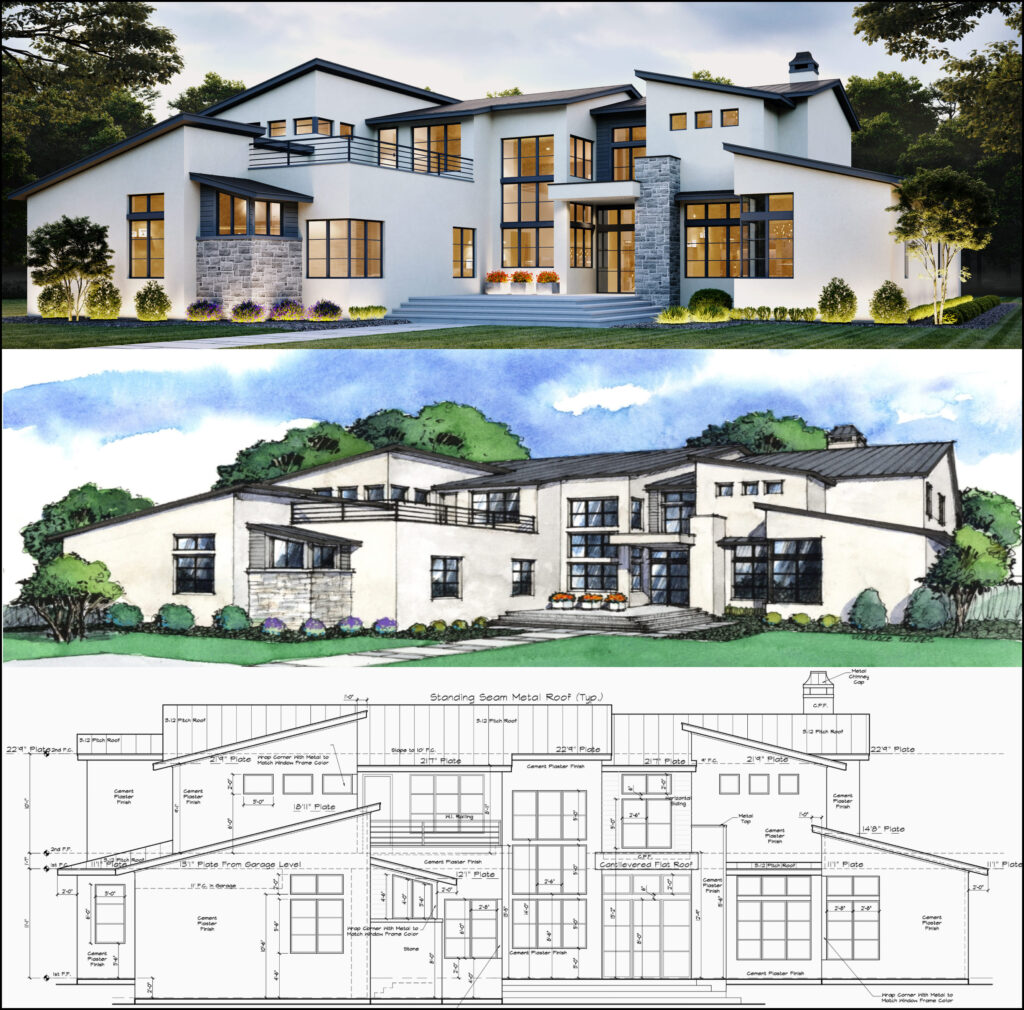The Creative Refine Behind Successful Projects from CDA Architects
The Creative Refine Behind Successful Projects from CDA Architects
Blog Article
The Necessary Role of an Architect in Forming Lasting Urban Settings for Future Generations
The function of a designer in crafting sustainable metropolitan environments is progressively critical in responding to the challenges of environment change and urbanization. By flawlessly incorporating environmental principles right into their layouts, engineers not just improve the aesthetic and functional top quality of city spaces yet likewise address pushing problems such as energy performance and social equity. Their proficiency in cutting-edge products and neighborhood interaction shapes developments that reverberate with regional values and goals. As we explore the intricacies of this field better, it becomes obvious that the future of urban living might pivot on the actual techniques architects utilize today.
Recognizing Sustainable Urban Style
Lasting city design incorporates environmental principles with metropolitan planning to produce atmospheres that are not just livable yet additionally resistant. This technique stresses the relevance of incorporating all-natural systems right into the city textile, making certain that development meets the demands of the existing without endangering the ability of future generations to meet their own requirements. Key components of lasting metropolitan design consist of efficient land usage, the promo of biodiversity, and the combination of green areas, every one of which add to enhanced top quality of life for homeowners.
In addition, sustainable metropolitan design prioritizes the decrease of the city warm island effect, enhanced air high quality, and effective stormwater management. It encourages making use of renewable energies and energy-efficient structure techniques, which considerably reduced carbon footprints. In addition, lasting metropolitan layout cultivates social equity by developing available public rooms and promoting mixed-use developments that deal with varied populaces.
With thoughtful preparation and innovative design approaches, sustainable urban atmospheres can improve community durability versus climate adjustment while fostering financial growth. This alternative method not only addresses instant urban challenges however also lays the foundation for much healthier, more lasting cities for generations to find.
Trick Responsibilities of Designers
Engineers play a critical duty in shaping sustainable metropolitan environments by translating design principles into substantial structures and spaces. Their responsibilities encompass a vast array of tasks that add to the general success of urban style projects.
First and foremost, architects carry out thorough website evaluations to recognize the environmental, social, and social context of their jobs. This fundamental understanding notifies their layout choices, making sure that buildings harmonize with their surroundings. They additionally take part in collective processes with stakeholders, consisting of city planners, designers, and the neighborhood, cultivating a comprehensive technique to metropolitan development.
Furthermore, architects are entrusted with producing designs that optimize power performance, source conservation, and performance. They should comply with regional zoning regulations, developing codes, and sustainability certifications, guaranteeing compliance while pressing the borders of technology.

Ingenious Materials and Techniques
In the pursuit of environmentally accountable design, cutting-edge products and methods have arised as essential aspects in the development of sustainable metropolitan atmospheres. Architects are significantly using materials that decrease ecological effect while enhancing power efficiency. As an example, recycled products, such as reclaimed wood and repurposed steels, not just lower waste but likewise add distinct aesthetic top qualities to frameworks.
Additionally, developments in technology have actually resulted in the growth of high-performance materials, such as shielded concrete forms (ICFs) and photovoltaic glass, which add to energy preservation and harness eco-friendly power. Techniques such as passive solar design and green roofs further exhibit exactly how design can harmonize with all-natural systems, reducing dependence on fabricated heating & cooling.
Furthermore, the combination of clever materials, which adjust to ecological adjustments, uses promising avenues for enhancing structure performance - cda architects. These products can react to temperature variations or moisture levels, enhancing comfort and sustainability
Ultimately, the critical selection and application of innovative materials and techniques equip designers to develop urban rooms that are not just practical and aesthetically pleasing but additionally resistant and environmentally responsible, making sure a sustainable future for generations ahead.
Neighborhood Involvement and Collaboration
The success of innovative products and methods in sustainable city design is dramatically improved by energetic community involvement and cooperation. Architects must acknowledge that the constructed setting exceptionally influences the lives of local homeowners, making it vital to entail them in the style procedure. Engaging the neighborhood cultivates a sense of ownership click to find out more and liability, making sure that developments not just fulfill visual and useful demands however likewise show the worths and desires of those who populate them.

Successful neighborhood engagement likewise assists in focusing on social equity within metropolitan development. By considering the voices of marginalized populaces, engineers can develop areas that are inclusive and fair. This way, neighborhood interaction and partnership end up being important to attaining truly why not try these out sustainable metropolitan settings that serve the needs of current and future generations.
Future Trends in Sustainable Style

Furthermore, innovations in innovation are forming future trends in lasting design. The combination of smart materials and building systems enables real-time power monitoring, improving efficiency and lowering carbon footprints. Innovations such as eco-friendly roofings, living wall surfaces, and energy-generating facades are becoming common practices, better advertising ecological balance within urban atmospheres.
Additionally, a shift in the direction of biophilic layout is obtaining grip, stressing the link in between nature and human health. By integrating natural environments, architects develop spaces that promote mental health while advertising biodiversity.
Conclusion
To conclude, architects are crucial ahead of time sustainable metropolitan environments via their proficiency in design, ingenious materials, and area engagement. By prioritizing power efficiency and source conservation, these specialists add to the development of durable metropolitan rooms that satisfy the needs of present and future generations - cda architects. The combination of ecological concepts not just enhances livability but likewise promotes social equity, guaranteeing advancements read the article reverberate with the values and goals of the areas they offer
Report this page